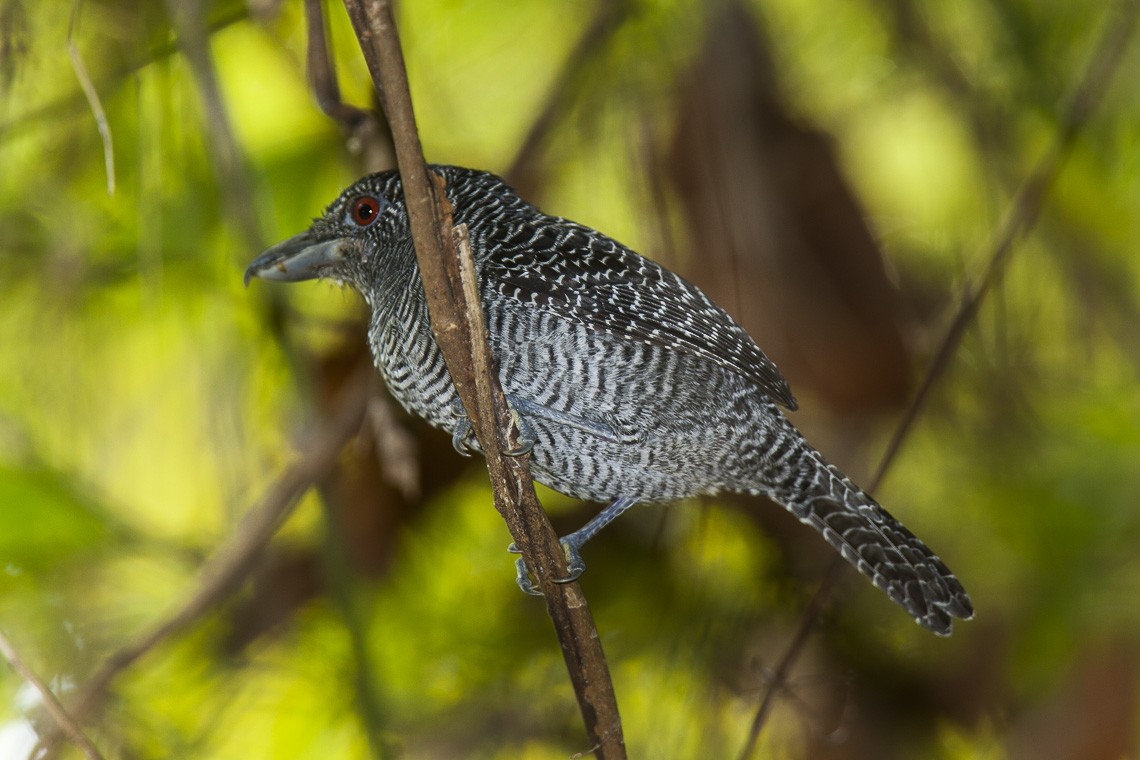Fasciated Antshrike
A species of Fasciated and Bamboo Antshrikes Scientific name : Cymbilaimus lineatus Genus : Fasciated and Bamboo Antshrikes
Fasciated Antshrike, A species of Fasciated and Bamboo Antshrikes
Botanical name: Cymbilaimus lineatus
Genus: Fasciated and Bamboo Antshrikes
Content
Description General Info
 Photo By Francesco Veronesi , used under CC-BY-SA-2.0 /Cropped and compressed from original
Photo By Francesco Veronesi , used under CC-BY-SA-2.0 /Cropped and compressed from original Description
The fasciated antshrike is a large antbird, 17 to 18 cm (6.7–7.1 in) long and weighing 35–40 g (1.2–1.4 oz). The plumage varies by sex (sexual dimorphism), with the male being black with white barring across the whole body. The barring is very faint on the crown and becomes more even further down the body. The crown is rufous on the female, and the rest of the body is brown bared with faint yellow-brown, become yellow-brown barred with brown further down the body. The bill is large and hooked. The fasciated antshrike makes a variety off calls, including lazy plaintive whistles and a rattle-like chatter. 
Size
18 cm
Nest Placement
Tree
Feeding Habits
Fasciated Antshrike predominantly feeds on large insects like grasshoppers, bugs, and beetles, including caterpillars and spiders. It also consumes lizards, amphibians, and fruit, showing varied dietary preferences. Its foraging behavior involves actively hunting for prey in foliage or on the ground.
Habitat
Fasciated Antshrike typically inhabits vine tangles and the dense mid-storey canopy of lowland evergreen forests. This species is prevalent in both the edges and interiors of forests, as well as in second growths and thickets. Although fasciated Antshrike is primarily found below 800 meters elevation, it can occasionally be encountered at altitudes up to 1600 meters, especially where it overlaps with C. sanctaemariae in the Andean foothills. The bird prefers habitats in broader tropical regions, generally avoiding dense forest interiors in Central America compared to the Amazon basin.
Dite type
Insectivorous
General Info
Feeding Habits
Bird food type
Distribution Area
It is found from eastern Honduras down to Colombia, the Amazon Basin and the Guyanas. Its natural habitat tropical moist lowland forests, in tangled and dense vegetation in the mid-story of the forest. It is more common in secondary forest in Central America. It is usually found below 800 m (2,600 ft) and rarely up to 1,600 m (5,200 ft) . Where its range overlaps with that of the bamboo antshrike it is found at lower elevations than that species. 
Species Status
Not globally threatened.